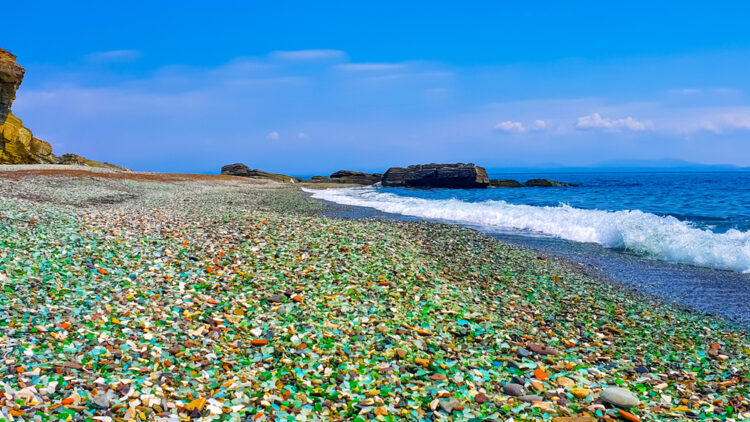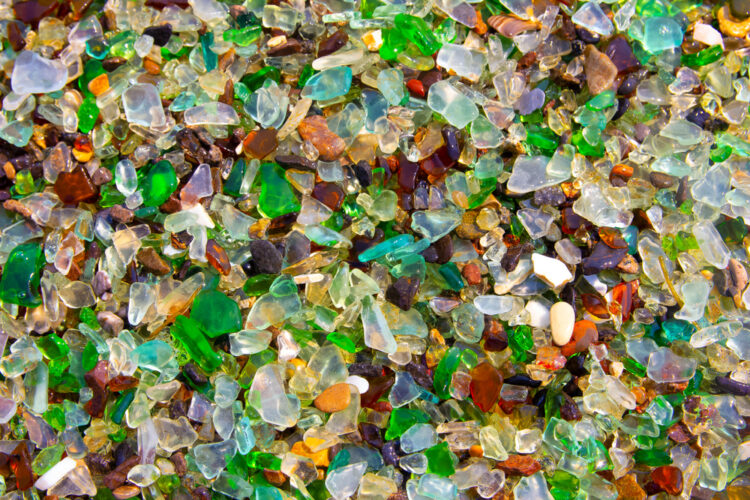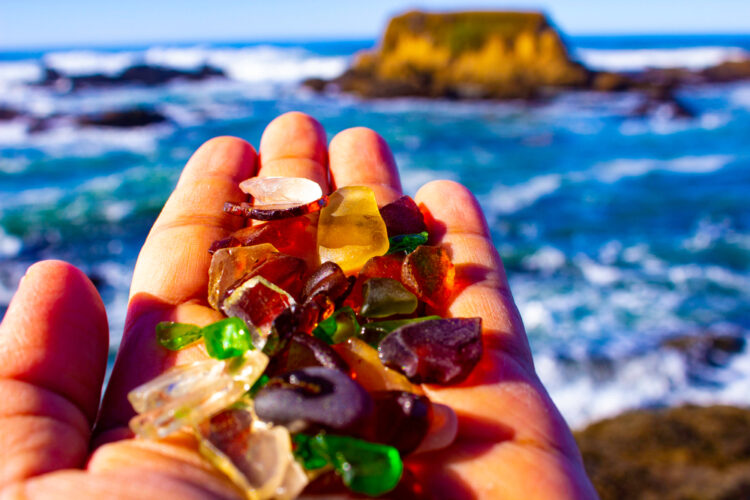The story of Glass Beach begins in the early 20th century when, even more so than now, environmental consciousness was far from the forefront of public concern. Located in Fort Bragg, approximately 170 miles north of San Francisco, Glass Beach is a unique spot along the coast. In 1906, following a devastating earthquake in San Francisco, Fort Bragg residents began using the coastline as an unofficial dump site. For decades, the local community discarded household waste, appliances, and vehicles directly onto the beach and into the ocean.
This practice continued until 1967 when the California State Water Resources Control Board finally intervened, closing the area to further dumping. However, the damage had already been done – the beach was littered with mountains of refuse.
What seemed like an environmental disaster slowly transformed into something unexpected. Over the subsequent decades, the relentless pounding of ocean waves began to break down the discarded items. Glass bottles, in particular, were gradually eroded and polished by the sea, creating the millions of smooth, colorful pebbles that now carpet the beach.

Glass Beach is actually composed of three separate beaches, often referred to as Glass Beach 1, 2, and 3. These correspond to different dump sites used over the years. Glass Beach 3, the northernmost and most accessible, is the area typically visited by tourists, and it attracts thousands of visitors each year, drawn by its unique beauty. The shore glitters in hues of white, brown, green, and the occasional rare pieces of red or blue sea glass.
Visitors to Glass Beach spend a lot of their time beachcombing. While removal of sea glass is officially prohibited to preserve the site, many visitors enjoy searching for interesting pieces and photographing their finds. Photographers are attracted because of the way the colorful sea glass against the backdrop of crashing waves and rugged cliffs provides excellent opportunities for photography. During low tide, visitors can explore the rocky pools along the shore, observing various marine life, and the surrounding MacKerricher State Park offers hiking trails with great coastal views. During migration seasons, lucky visitors might spot gray whales from the shore.

Today, Glass Beach faces a new threat – its own popularity. Despite prohibitions, many visitors cannot resist the temptation to collect sea glass as souvenirs. This gradual depletion has led to concerns about the long-term sustainability of the site as a tourist attraction.
In response, local authorities and environmental groups have launched education campaigns to discourage the removal of sea glass. They emphasize the importance of preserving the beach for future generations and remind visitors that taking sea glass is not only illegal but also diminishes the experience for others.
Located in town, the Sea Glass Museum showcases an extensive collection of sea glass and educates visitors about its formation and history. Glass Beach has gained significant popularity over the years, particularly with the rise of social media sharing its unique beauty. The site has been featured in numerous travel blogs, magazines, and television programs. As you might expect the area is most crowded during the summer months, especially on weekends and holidays. For a more serene experience, consider visiting during the shoulder seasons of spring or fall. These periods offer milder weather and fewer crowds, allowing for a more intimate exploration of the beach.
Winter can also be an excellent time to visit for those who don’t mind cooler temperatures and the possibility of rain. Storm-watching can be particularly dramatic during this season, and the winter waves often wash up fresh deposits of sea glass. For the best tide pooling opportunities, plan your visit during low tide. Consult local tide charts to time your visit accordingly.


